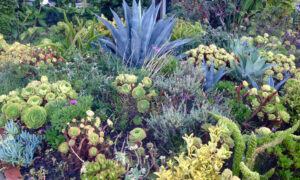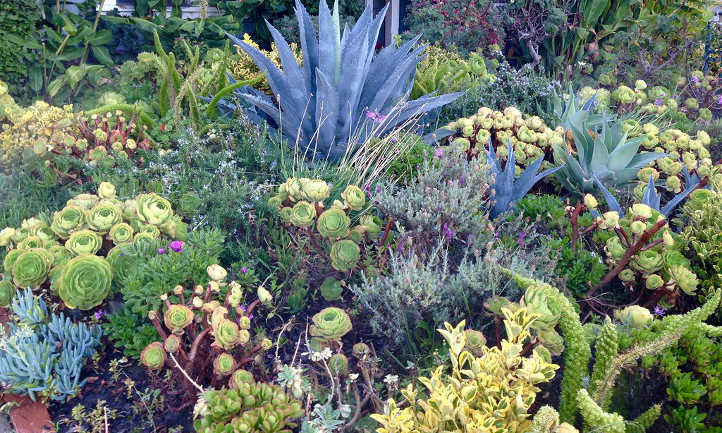Xeriscaping is a way of creating a lush green garden using native plant species that are adapted to your climate. It also includes water-efficient irrigation and the use of mulch to retain soil moisture and reduce evaporation.
The result is a vibrant, attractive landscape that conserves natural resources and cuts your water bill. But it’s not all southwestern desert scenery, with shrubs and flowers available to suit any style or theme. Visit https://vantaoutdoors.com/xeriscapes/ for more information.
A key tenant of xeriscaping is using plants that are well adapted to the local climate. This means choosing plants that can withstand your weather, making sure you plant them in the right place, and giving them enough water to get established. This is important because a well-established, deep-rooted plant will continue to access water even after the surface soil has dried. This watering strategy can help keep a xeriscape yard looking beautiful all year.
Xeriscaped gardens can be as beautiful and varied as grassy lawns. However, they usually require much less maintenance. A xeriscaped garden is a great way to reduce your outdoor water usage, which can have positive impacts on the environment and your utility bills. The average household uses up to 70% of its water outdoors. Xeriscaping is one of the easiest ways to reduce this number.
Although a xeriscape landscape may require less water than a traditional garden, it is important to remember that your garden will still need regular maintenance. Regular pruning and weeding will keep your landscape healthy and free from unwanted invaders. It’s also important to check for and address any soil problems. Poor or compacted soil can lead to a lack of root penetration, which in turn will reduce the water absorption of your plants. It’s also a good idea to mulch your landscape to help retain soil moisture and prevent evaporation.
As a rule, hardscape features like pavers, rock, and gravel are considered part of a xeriscape landscape. This is because these features can complement your landscape’s plants and reduce the amount of water needed to maintain your garden. However, it’s important to use paving materials that will allow for adequate drainage and allow rainwater to percolate into the ground rather than run off.
Choosing the right paving material for walkways and other high-traffic areas is a crucial step in keeping your xeriscape garden low maintenance. Choose materials that can handle the traffic and will show the least wear and tear over time. For example, pavers made from recycled materials will add a modern touch to your garden and reduce your environmental impact.
Drought Tolerant
There are many beautiful plants that are drought tolerant, which makes them ideal for xeriscape gardens. Using plants native to your region is best, as they are already well adapted to your climate. Many xeriscape plants also have small leaves or thick stems that reduce water consumption. Some examples include bush anemone, bush sunflower and woolly blue curls. Adding organic matter like compost to the soil is essential, as this helps increase the ability of the soil to retain and absorb moisture.
Using a layer of mulch (2-3 inches) will help keep the soil cool and reduce evaporation. In addition, this will keep weeds down as well.
Water reduction landscaping is a popular trend, especially in areas that are experiencing drought or water shortages. However, even areas with abundant rainfall can benefit from xeriscaping as a way to save money on utility bills and reduce the amount of time spent watering and pruning your landscape.
While xeriscape is often associated with southwestern desert scenes, there are many different plant options for creating a unique and attractive garden. Cacti are often used, but there are also numerous flowering plants that can add color to your xeriscaped landscape. In addition to southwestern species, there are a wide variety of Mediterranean plants that can lend a rural Tuscan feel to your landscape.
Another popular choice is the Apache plume, a shrub that thrives in arid regions and has a natural tolerance to high temperatures and dry conditions. Other xeriscape plants that are tolerant to drought include the saguaro and the panchito manzanita.
The possibilities for your xeriscape are endless, and with the right knowledge, you can make your home’s exterior an irresistible curb appeal. To get started, consider consulting with a company that specializes in xeriscaping. They can help you choose drought tolerant plants, install them and care for them. They can also give you ideas for the best colors, textures and plant combinations that work for your property. They can even put your garden on a watering schedule to ensure that the plants are getting consistent amounts of water and not too much or too little.
Attractive
Xeriscaping can be as attractive as a lush garden but with the advantage of using less water. In fact, studies show that switching from traditional lawn landscapes to xeriscapes can reduce water usage by 60-70%. That is a huge savings in water and money.
The key to a beautiful xeriscape garden is the use of native plants and hardscapes that are adapted to the local climate. Native grasses and shrubs are especially hardy and require less water than non-native species. The addition of colorful flowers adds beauty to the xeriscape garden. These flowers thrive in dry conditions and often draw pollinators to the landscape.
Another way to improve the xeriscape is to use mulch. Mulch absorbs rainwater, prevents water runoff and helps the soil regulate temperature. When choosing the type of mulch, choose non-porous materials like sand, gravel or decomposed granite. This will allow the water to penetrate the soil and be absorbed by the roots rather than evaporating into the air. It is also important to keep in mind that the more water a plant uses, the more fertilizer it needs. Avoid using high-nitrogen fertilizers and opt for organic options if possible.
Lastly, it is important to use efficient irrigation methods when watering your xeriscape garden. Drips and soaker hoses deliver the water directly to the base of the plant which prevents the evaporation that occurs with sprinklers. It is also best to water in the morning when the sun has not yet reached the plants.
While xeriscaping is a good alternative for any garden, it is particularly helpful in drought-prone areas where water conservation is an important concern. Xeriscaping allows people to enjoy the beauty of their yard without worrying about the high cost of water.
With the right planning, you can create a beautiful xeriscape garden that is as attractive as any other landscape. Just make sure to use plants and grasses that are native to your region. This will help the xeriscape to become naturally resistant to water and pests. It is also a great idea to add a designated seating area that can be used for relaxing. This can be accomplished by using flagstones or paving stones. You can even include a fire pit or chiminea for the perfect outdoor living space.
Easy To Maintain
The first thought many people have when they hear the word xeriscape is of a dry, austere landscape of cactus and rocks. While xeriscaping does often involve eliminating some grass and replacing it with drought-tolerant plants, it can also be lush, green and beautiful. It all depends on the type of plants and soil used, and how well they are cared for.
Native plants are typically best for a xeriscape because of their deep roots that help stabilize the soil and reduce water runoff. A xeriscape should also incorporate some trees, shrubs and perennials that provide interest throughout the seasons. Using drought-tolerant plants means that your yard will require less maintenance and upkeep. That means you will spend less time mowing, fertilizing, and weeding. It also means your water bill will decrease immediately.
A xeriscape should be designed around the plant’s mature size. This helps avoid overcrowding. It also ensures that you have enough space for the plant to grow in its natural habitat. Taking into account the amount of sunlight and shade in different areas is important, as are a plant’s cold hardiness and heat tolerance.
While xeriscape is easy to maintain, there are some things that need to be done consistently. Keeping up with the mulch level is one thing, but seasonal irrigation adjustments and efficiency checks are also important. Getting these things right from the beginning will eliminate some of the maintenance, save you money and keep your yard looking great!
If you are interested in reducing your water usage, contact us about a xeriscape design for your property. We can help you get started with the process by removing the turf grass, amending the soil, and installing low-drip or drip irrigation systems. We can then help you choose and install the perfect plants and hardscaping for your unique landscape. We have the experience, knowledge, and expertise to create a yard that looks beautiful and is simple to care for. We look forward to hearing from you!
